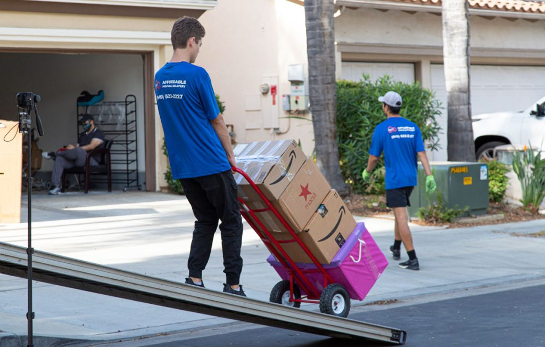Various Sorts of Moving Boxes
Moving to a new apartment is accompanied by the transportation of a large number of things. They need to be packed carefully to prevent damage during transportation. Cardboard and plastic boxes can be used as packaging. You can fill them with bubble wrap or other soft materials, if necessary.
Professional movers from myaffordablemove choose packing materials according to the size, configuration, and fragility of items. If you load items without sorting them into any boxes, you can regret your actions in a new place. Therefore, let's take a closer look at the peculiarities of choosing packaging for different stuff.

Problems That Arise When Moving
The quality and size of the packaging determine the safety of things. If the materials aren't selected correctly, you may encounter the following problems:
- When loading, items can hit hard surfaces which are fraught with defects and breakage.
- No one is immune from dropping things from a height. Without proper packaging, dishes, cosmetics, and appliances can break, get wet or dirty.
- The correct arrangement of things is of paramount importance. So, don't put cosmetics in fragile jars in a box with books, household chemicals, or documents.
If you incorrectly pack expensive clothes, fragile things, and upholstered furniture, they are likely to lose their attractive appearance.
Choosing Cardboard Boxes
Cardboard boxes differ in size, type, shape, brand, presence of handles, and other parameters. If you choose by size, then small boxes are suitable for small things and fragile items because they better retain their shape.
You can pack any property with suitable dimensions in medium-sized boxes. They can be loaded with dishes, books, and even small household or office appliances. If items require special protection from shocks, they are additionally wrapped in bubble wrap or corrugated cardboard before being placed in the box.
Large boxes are used for the transportation of bedding, soft toys, and textiles. They aren't suitable for heavy items (except for boxes for household appliances). If a large box is loaded to the top with books or other weighty goods, it may burst during lifting. Furthermore, heavy bulky packaging cannot be lifted without help.
Cheap boxes are created from thin and soft cardboard. In such boxes, it's better not to transport valuable or heavy items.
For fragile items, it's better to buy dense corrugated boxes. They are created from three or more layers of cardboard. The best options for moving are three-layer and five-layer boxes made according to standards. This packaging doesn't lose its shape and is not afraid of deformation. It's rigid, so it protects dishes, fragile decorative items, appliances, and valuables well.
Box Configuration
If we compare by type, then the following types of packing materials are most often used:
- Four-valve — for transporting any damage-resistant items. Adhesive tape will be required when packing.
- Self-assembled — this type of box is assembled without the use of adhesive tape.
- Extra strong — for books and dishes and other heavy items.
- Closet — for clothes (suits, dresses, jackets, coats).
Tall boxes are created for clothes. They aren't afraid of moisture and don't lose their shape. You can transport clothes directly on the hangers, placing them on the bar. This method helps protect closet items from crumpling and damage, preserving the original appearance.
There are also flat boxes. They are best taken for paintings, fittings, and digital equipment. It's also recommended to transport small items in a flat box as it's easier to find them there than in deep boxes.
Plastic Packaging
You can use plastic boxes for the transportation of fragile property. They are protected from shocks and crumplings. This container should be chosen according to the size of things, the presence of perforations, and stackability. When using boxes made of plastic, it should be remembered that the strong walls prevent only mechanical impact from the outside. But they won't protect items from damage to the inner surface of the box or to neighboring goods inside the package. For this reason, you should put foam, cut paper, plastic wrap, or other fillers inside the boxes.
Tips to Make the Right Choice
When picking boxes, experts recommend emphasizing such indicators:
- Density — models of different densities are available for sale. Too thin bottom and walls won't withstand a heavy load and will quickly tear. For carrying heavy objects, pick at least three-layer boxes.
- Reliability — if the box comes apart at the seams under minimal load, it's unlikely to ensure the integrity of the property. Make sure the joints are strong enough.
- Size. Many people make the same mistake — choosing a box that is too large. It's optimal to fill each box with things with a total weight of up to ten kilograms.
- Handles. The presence of slots for carrying isn't always justified, and the presence of this detail makes the box more fragile.
The hardest part is to calculate exactly how many boxes you will need. On average, 4 to 6 cartons are needed per room.
Properly selected boxes guarantee that the move will be easy and trouble-free, and all the property will get to the destination in one piece. With the right packaging, moving isn't a scary thing if you follow all the tips and do it wisely.
More Articles